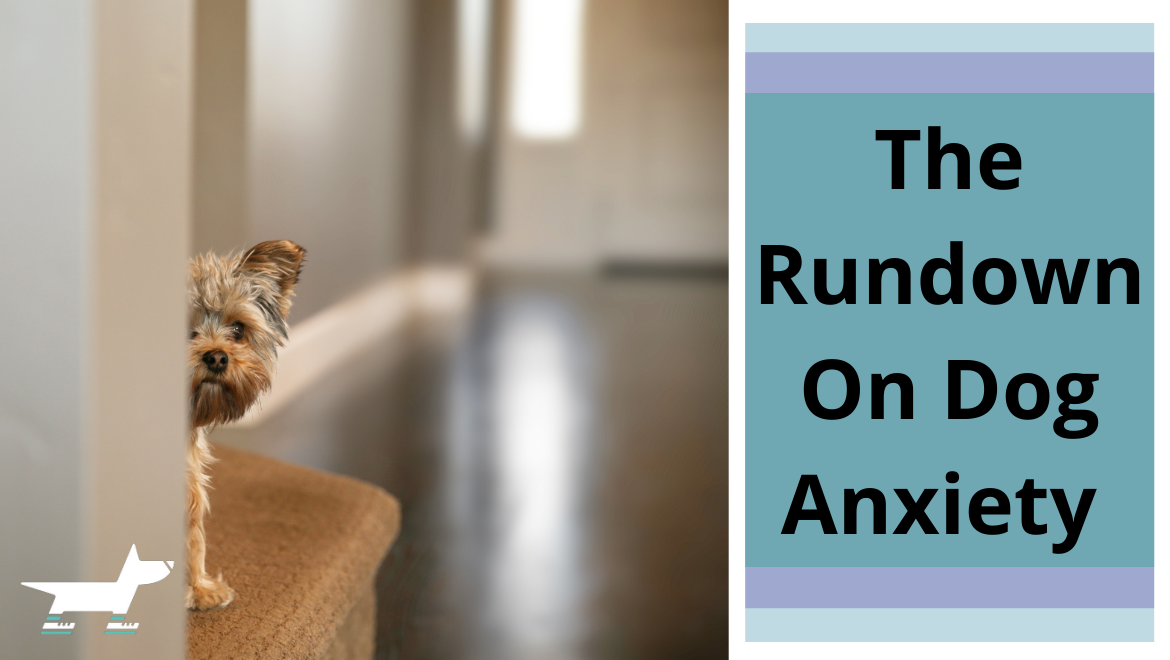The Rundown on Dog Anxiety

Just like in humans, dog anxiety comes in many forms. People can talk about their anxiety and what triggers it, and ask for what they need to help navigate their emotions, but we cannot communicate like this with our pups! With dogs, we have to rely on body language to tell us what makes our pup uncomfortable, which can be difficult to do if you don’t know what you are looking for. Here is a quick rundown of two types of dog anxiety, how they can manifest, and what you can do for prevention and treatment.
Separation Anxiety
This type of anxiety is quite common in pups. Dogs experience separation anxiety when they are left alone and/or are away from family members. Separation anxiety can manifest into destructive behaviours like destroying furniture, excessive barking or whining, indoor bathroom ‘accidents’, and sometimes aggression. As you can imagine (or if your pup has dealt with this), separation anxiety can be extremely stressful for all family members.
What can trigger episodes of separation anxiety?
- being left alone for any period of time, or for the first time
- moving homes
- changes in routine
- loss of a family member
- anticipation of a family member leaving (putting on shoes or jackets, keys jingling, etc.)
What can help?
When you are leaving or entering your home, ignore your dog for a few minutes before returning to normal. This strategy is to make the transition of coming and going less of a big deal to your pup. We know that this can be very difficult; We all want to dote over our pets the second we walk through the door, but doing this can actually amplify episodes for anxious pups in the future. Another thing you can do to make your pup feel close to you is to leave out blankets or clothes that smell like you!
Fear-related Anxiety
This type of anxiety is caused by specific stimuli. Some examples of stimuli include loud noises, new people, other dogs, hats, sunglasses, car rides, etc. Anxiety is the anticipation of future dangers, so once your dog has developed a fear they may show signs of distress or panic in expectation to that trigger. This can be incredibly exhausting for your pup and hard to predict as pet-parents. A fear-related anxiety response may include shaking, hiding, excessive panting, tail-tucking, diarrhea, and sometimes more dangerous, unpredictable behaviours like bolting and running away.
What can you do?
Helping your pup manage their fear response can help reduce stress. Desensitization and counter-conditioning are two common strategies for dealing with dog anxiety (both fear-related and separation anxiety). Desensitization is a low-intensity and recurrent exposure to a fear stimulus, and counter-conditioning involves teaching your pup to perform a different behaviour in place of anxiety.
For example, if your pup has dog-related anxiety and has a response every time they see another pup, counter-conditioning would involve teaching your pup to sit and look at you for a treat when you encounter another dog. If this routine is repeated and controlled, then overtime your dog may begin to associate the stimulus with the desired behaviour, and not the anxious one. In this scenario the desired behaviour was sitting and focusing, but there are many other behaviours you could try and associate with a fear stimulus that work better for your pup. The desensitization aspect in this example would be the action of going for short walks where you see other dogs at a regulated distance.
How Your Vet Can Help
Your vet is able to provide advice and strategies for reducing your pups anxiety. We discussed only two of the multiple types of dog anxiety, and each dog is different in the way their anxiety may manifest. Your vet will be able to asses the type and severity of your pup’s anxiety, help you identify triggers, give you options for treatment and provide you resources for more information. Since the signs of anxiety are also common signs for general distress, your vet can help you rule out any medical conditions that might be actually causing those symptoms.
How Dog Jogs Can Help
Regular dog walking keeps your dog physically and mentally stimulated, which in general can help tucker out your pup and reduce some stress. Dog walkers in Edmonton are excellent at reading dog body language, and we know how to adjust our services to ensure your pet is comfortable. Dog walkers can help your pup stick to a regular walking routine, and we can implement any counter-conditioning or training strategies that you use into our walks. If your pup just needs someone to check in on them and show them some love while you are at work, we can do that too!
If you’d like more info on our services and how we can help reduce your pup’s anxiety, you can contact us at any time or book a free virtual consult!